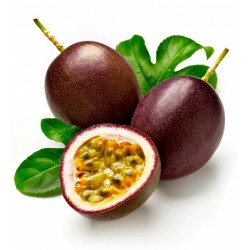Menu
-
MenuGeri
- Home
-
Kategoriler
-
-
Kategoriler
-
Sebze tohumları
-
Ülkelere Göre Çeşitler
- Ermenistan'dan çeşitler
- BH'den Çeşitler
- Hırvatistan'dan Çeşitler
- Fransa'dan Çeşitler
- Almanya'dan Çeşitler
- Yunanistan'dan Çeşitler
- Macaristan Çeşitleri
- Hindistan'dan Çeşitler
- İtalya'dan çeşitleri
- Japonya'dan Çeşitler
- Kuzey Makedonya çeşitleri
- Peru Çeşitleri
- Rusya'dan Çeşitler
- Sırbistan'dan Çeşitler
- Slovenya'dan Çeşitler
- İspanya Çeşitleri
- Tayland çeşitleri
- Türkiye'den Çeşitler
- ABD'den Çeşitler
- Domates tohumları
- Mısır tohumları
- Kabak ailesi
- Fasulye ailesi
- Salatalık tohumları
- Dolma biber tohumları
- Havuç ailesi
- Soğan ailesi
- Marul tohumları
- Patates ailesi
- Lahana ailesi
- Turp tohumları
- Pancar ailesi
- Karpuz tohumları
- Kavun tohumları
- Karnabahar tohumları
- Ayçiçeği ailesi
-
Ülkelere Göre Çeşitler
- Meyve tohumları
- Acı biber tohumları
- Tıbbi bitki tohumları
- Tırmanma bitki tohumları
- Ağaçlar - Çalı tohumları
- Palmiye tohumları
- Süs bitkileri tohumları
- Tütün tohumları
-
Sebze tohumları
-
-
-
-
- YENİ ÜRÜNLER
- Hesap oluştur
- Teslimat - Ödeme
- FAQ
Last Product Reviews
Out of the two seeds, one germinated and the other one was dead and floatin...
By
 Riikka H on 07/03/2024
Riikka H on 07/03/2024
Verified Purchase
170 adet ürün var.
Sıralama ölçütü:
Toplam 170 üründen 61-75 arası gösteriliyor

Sırbistan'dan Çeşit

Bahçe Ayçiçeği tohumları...
Fiyat
€1,95
(SKU: P 13)
Seeds Gallery EU,
5/
5
<!DOCTYPE html>
<html>
<head>
<meta http-equiv="Content-Type" content="text/html; charset=UTF-8" />
</head>
<body>
<h2><strong>Bahçe Ayçiçeği tohumları Çok Renkli</strong></h2>
<h2><span style="color: #ff0000;"><strong>10 tohum paketi için fiyat.</strong></span></h2>
<p>Hiç böyle renklere sahip bir ayçiçeği görmediniz! Çok renkli ayçiçeğimiz! Vazolarda ve bahçede kesinlikle çok etkileyici. Küçük çiçekli (5 ila 15 cm), farklı renklerde (sarı, kahverengi, turuncu, limon sarısı, ...) birçok çiçek veren, bitki başına 15, ancak hepsi aynı anda çiçek açmayan ayçiçeği çeşidi. çiçeklenmenin başlangıcından sonuna kadar yaklaşık bir ay boyunca çiçeklerin olmasını sağlar.</p>
<p>Bitkiler kesmek için iyi dallanmıştır ve mobilyalarınızı lekelememesi için polen içermez. Tam güneşte ortalama iyi drene edilmiş bahçe toprağında büyütün. Boyu 2 metreye kadar büyüyün, bu yüzden güneşi seven diğer bitkileri gölgelememek için doğru yeri seçin.</p>
<p>Her tür toprağa oldukça iyi uyum sağlar</p>
<p>Yetiştirme konusunda küçük tavsiyeler: Maksimum güneş ışığı, gevşek toprak, seçtiğiniz gübre (mineral gübre, ısırgan gübresi, kompost vb.)</p>
</body>
</html>
P 13


Soğuğa ve dona dayanıklı bitki
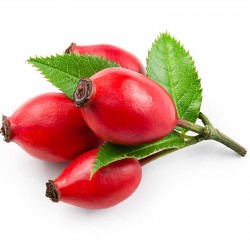
Rose Hip Seeds - Rose Haw -...
Fiyat
€2,15
(SKU: MHS 122)
Seeds Gallery EU,
5/
5
<div class=""rte"">
<h2><strong>Rose Hip Seeds - Rose Haw - Rose Hep (Rosa canina)</strong></h2>
<h2><span style="color: #ff0000;"><strong>Price for Package of 1g (65+-) seeds.</strong></span></h2>
<div>The rose hip, also known as rose haw or rose hep, is the fruit of the rose plant, that typically is red-to-orange, but ranges from dark purple to black in some species. Rose hips begin to form after successful pollination of flowers in spring or early summer, and ripen in late summer through autumn.</div>
<p><strong>Usage</strong></p>
<p>Rose hips are used for tisanes, jam, jelly, syrup, soup, beverages, pies, bread, wine, and marmalade. They can also be eaten raw, like a berry, if care is used to avoid the hairs inside the fruit.</p>
<p>A few rose species are sometimes grown for the ornamental value of their hips, such as Rosa moyesii, which has prominent large red bottle-shaped fruits.</p>
<p>Rose hips have recently[when?] become popular as a healthy treat for pet chinchillas and guinea pigs. These small rodents are unable to manufacture their own vitamin C and are unable to digest many vitamin-C rich foods. Rose hips provide a sugarless, safe way to increase their vitamin C intake.</p>
<p>Rose hips are also fed to horses. The dried and powdered form can be fed at a maximum of 1 tablespoon per day to improve coat condition and new hoof growth.</p>
<p>The fine hairs found inside rose hips are used as itching powder. Dried rose hips are also sold for primitive crafts and home fragrance purposes.</p>
<p>Rose hips were used in many food preparations by the indigenous peoples of the Americas.</p>
<p> Rose hips can be used to make Palinka, a traditional Hungarian alcoholic beverage. They are also the central ingredient of Cockta, the fruity-tasting national soft drink of Slovenia.</p>
<p>In his book Stalking the Faraway Places, wild foods enthusiast Euell Gibbons recommended stuffed rose hips made by slicing a large hip in half, removing the seeds and inserting a wild raspberry.</p>
<p>Rose hips are commonly used as a tisane, often blended with hibiscus, and also as an oil. They can also be used to make jam, jelly, marmalade, and rose hip wine. Rose hip soup, "nyponsoppa", is especially popular in Sweden. Rhodomel, a type of mead, is made with rose hips.</p>
<p><strong>Medical uses</strong></p>
<p>Rose hips are particularly high in vitamin C content, one of the richest plant sources available. However, RP-HPLC assays of fresh rose hips and several commercially available products revealed a wide range of L-ascorbic acid content, ranging from 0.03 to 1.3%.[2] Rose hips of some species, especially Rosa canina (Dog Rose) and R. majalis, have been used as a source of vitamin C. During World War II, the people of Britain were encouraged through letters to The Times newspaper, articles in the British Medical Journal, and pamphlets produced by Claire Loewenfeld, a dietitian working for Great Ormond Street Hospital for Sick Children, to gather wild-grown rose hips and to make a vitamin C syrup for children. This was because German submarines were sinking many commercial ships: citrus fruits from the tropics were very difficult to import.</p>
<p>Rose hips contain plenty of lycopene, an important and strong antioxidant that prevents oxidation of low density lipoprotein (LDL) as well as of many cellular membranes.[3] Lycopene in rose hips differs more in its isomer distribution than in other sources (tomatoes, pink grapefruit).[citation needed]</p>
<p>Rose hips also contain some vitamin A and B, essential fatty acids, and antioxidant flavonoids.</p>
<p>A study of a rose hip preparation for treating rheumatoid arthritis concluded that there was a benefit, apparently due to both anti-inflammatory and anti-oxidant effects.</p>
<p>Rose hips are used to help prevent colds and influenza.</p>
<p><strong>Propagation</strong></p>
<p>Roses are propagated from hips by removing the achenes that contain the seeds from the hypanthium (the outer coating) and sowing just beneath the surface of the soil. The seeds can take many months to germinate. Most species require chilling (stratification), with some such as Rosa canina only germinating after two winter chill periods have occurred.</p>
</div><script src="//cdn.public.n1ed.com/G3OMDFLT/widgets.js"></script>
MHS 122 (1g)

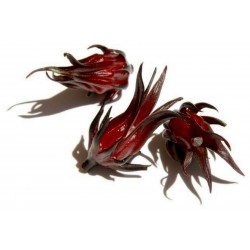
Kerkede tohumları (Hibiscus...
Fiyat
€2,75
(SKU: MHS 19)
Seeds Gallery EU,
5/
5
<h2><strong>Kerkede tohumları (Hibiscus sabdariffa)</strong></h2>
<h2><span style="color:#ff0000;"><strong>10 tohum paketi için fiyat.</strong></span></h2>
<p><strong>Kerkede</strong> (<em>Hibiscus sabdariffa</em>), ebegümecigiller (Malvaceae) familyasından bitki türü.</p>
<p>Kerkede, olasılıkla Batı Afrika kökenli bir bitki olup, Batı Hint Adaları'nda 16. yüzyılın başlarından beri kaydedilen bu bitkinin 17. yüzyıla gelindiğinde Asya'da da yetiştirilmekte olduğu bilinmektedir. Flemenk-Doğu Hint Adaları'nda (günümüzde Endonezya) bitkinin devlet teşvikiyle yaygın ziraatine 1920lerde şeker çuvalı imalatında kullanılmak üzere elyaf elde edilmek için başlanmıştır.</p>
<h2>Tanımlama</h2>
<p>Kerkede, çok yıllık bir bitki olmasına rağmen yıllık hasatla tohumdan üretilir. Killi, geçirgen toprakları ve aslen tropik iklimleri tercih eder. Büyüme evresinde, ortalama 2,5 desimetrelik aylık yağış ister. Sap ve yaprak rengi koyu yeşille kızılımtırak arasında değişir, yaprakları üç ila beş boğumlu, 8 ila 15 santimetre uzunluğundadır; çiçekleri kremsi beyaz ya da soluk sarı renkte olup 8 ila 10 santimetre çapındadır. Çanak dibinde 1,5-2 santimetre çapında, çanak ucunda 3-3,5 santimetre çap kesbeden çiçek dış örtüsü, her birinin dibinde koyu kırmızı bir leke bulunan etli çanak yapraklardan oluşur.</p>
<h2>Varyeteleri</h2>
<h3>Liflik kerkede</h3>
<p><strong>Liflik kerkede</strong> (<em>Hibiscus sabdariffa</em> var. <em>altissima</em>) : Elyafı için üretimi yapılır. Tohumları sık ekilir, az dallanan, 3 ilâ 5 metre yüksekliğe ulaşan ağaççıklar verirler. Tomurcuklanma başladığında kesilen saplar, havuzlamaya tabi tutulup döğülerek ya da kabukları soyularak lifleri çıkarılır. Bazı bölgelerde havuzlama süresi, yalnız kabuğu ve kabuğa yapışık lifleri işleyereyek çabuklaştırılmaktadır. 1-1,5 metre boyundaki lif telleri, bireysel lif hücrelerinden oluşur. Lifleri sak elyafı grubundandır. Kerkede elyafı parlaktır, rengi kremsi beyazdan gümüşi beyaza değişir; orta kuvvette bir liftir. Genellikle jüt lifleriyle harmanlanarak çuval bezi ve sicim yapımında kullanılır. Hindistan, Java ve Filipinler önde gelen kerkede elyafı üreticileridir.</p>
<h3>Yiyimlik kerkede</h3>
<p><strong>Yiyimlik kerkede</strong> (<em>Hibiscus sabdariffa</em> var. <em>sabdariffa</em>): Yenebilir çiçek dış örtüleri (<em>calix</em>) için yetiştirilir. Tohumları daha aralık ekilir, daha kısa ve çok dallı olurlar. Çiçekler, dış çanak dolgun ve etli hâle gelince toplanır. Çanak yaprak ihracatında Çin ve Tayland global ihracat hacminin büyük bölümünü elinde tutmaktadır.</p>
<h2>Besin olarak kullanımı</h2>
<div><img alt="Kerkede tohumları (Hibiscus sabdariffa)" src="https://upload.wikimedia.org/wikipedia/commons/thumb/b/be/Mbo.jpg/220px-Mbo.jpg" title="Kerkede tohumları (Hibiscus sabdariffa)" width="220" height="293" /></div>
<div>
<div>
<div>Kerkede çayı</div>
</div>
</div>
<p>Çoğu tropik iklim bölgesinde, <em>Hibiscus sabdariffa var. altissima'</em>nın kırmızı, ekşimtırak çiçek çanakları yerel içecek, salça, reçel, konserve ve baharatlı turşu yapımında kullanılır; yaprak ve bitki sapları salata ya da pişmiş sebze olarak tüketilir ve acılı yemekleri baharatlandırmaya yarar. Afrika'da yağlı tohumları yenir; Sahara altı tarihi Sudan bölgesinde bitki çayı olarak tüketilir. Batı ülkelerinde bitki çayı olarak tüketilmesi yakın zamanda yaygınlaşmıştır.</p>
MHS 19


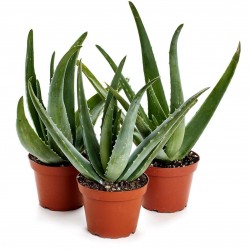
Tıbbi sarısabır (Aloe vera)...
Fiyat
€4,00
(SKU: CT 24)
Seeds Gallery EU,
5/
5
<h2 id="short_description_content"><strong>Tıbbi sarısabır (Aloe vera) Tohumları (Aloe barbadensis)</strong></h2>
<h2><span style="color:#ff0000;"><strong>5 tohum paketi için fiyat.</strong></span></h2>
<p>Tıbbi sarısabır (Aloe vera), Asphodelaceae familyasından tıbbi amaçlarla kullanılan bir sarısabır türü. Yaprak, iki bölümden, meydana gelmiştir. Müshil olarak kullanılan ve antrakinonlar adı verilen maddeleri içeren yeşil kabuk bölümü ve Aloe jeli olarak adlandırılan müsilaj bölümü.</p>
<p>Jel kısmında, 18 amino asid, 20 mineral, 12 vitamin ile çeşitli bilimsel araştımalarda immunostimülan olduğu gösterilmiş olan asemannan, glukomannan, mannoz-6 fosfat, aloerid gibi polisakkaridler; çeşitli enzimler, deneysel olarak antihistaminik olduğu gösterilmiş olan alprogen; yine çeşitli çalışmalarda kan kolesterol düzeylerine ve selim prostat hipertrofisine etkili olduğu bildirilen lupeol, beta-sitosterol ve kampesterol gibi steroller ile lignin, salisilat gibi maddeler bulunmaktadır. Antrakinonları içeren kabuk bölümü suyunun uçurulması ile elde edilen ve laksatif olarak kullanılan kısma Aloe denir. Yaprağın iç kısmında bulunan ve parankim hücreler tarafından imal edilen müsilaj görünümlü renksiz kısma ise Aloe vera Jel adı verilir. Bu iki kısım devamlı şekilde kavram karışıklığına neden olduğu için, Dünya Sağlık Örgütü (WHO) nün Seçilmiş Tıbbi Bitkiler monografında ayrı bölümler halinde incelenmiştir.</p>
<p>Aloe vera jel inin gerek yüzeysel kullanım, gerekse besin tamamlayıcısı olarak içecek şeklinde hazırlanması, özel yöntemler gerektirmektedir ve ürünler, günümüzün son derece gelişmiş analiz yöntemleri ile kontrol edilmektedir. Bundan amaç, jelde varolduğu bilinen maddelerin ürünün içinde de korunmuş olarak bulunmasıdır.</p>
CT 24 (5 S)

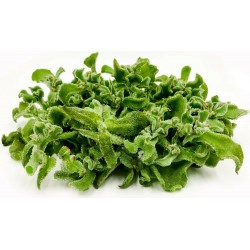
Buz Bitki Tohumları...
Fiyat
€1,50
(SKU: VE 131)
Seeds Gallery EU,
5/
5
<h2 class=""><strong>Buz Bitki Tohumları (Mesembryanthemum crystallinum)</strong></h2>
<h2><span style="color: #ff0000;"><strong>10 veya 25 Tohum Paketinin Fiyatı.</strong></span></h2>
<p>Buz Tesisi olarak bilinen Mesembryanthemum crystallinum, Güney Afrika'ya özgü hoş bir etli. 1 metre genişliğinde ve yaklaşık 10 cm yüksekliğinde yoğun bir toprak örtüsü olarak büyür.</p>
<p>Su depolayan büyük, mesane benzeri hücrelerle kaplıdır, güneşte parlar ve ayaz bir görünüm verir. Bitki yaşı olarak, yapraklar kırmızılaşır.</p>
<p>Yenilebilir yeşil yapraklar kaynatılır ve yeşil olarak alınır veya tuzlu bir garnitür olarak taze olarak kullanılır. Beyaz çiçekler üretir. Genellikle kumlu ve kayalık kıyı bölgelerinde yetişir.</p>
<p>Kıyı bölgelerinde hayatta kalmak için, bitkinin birikmesi ve ardından tuzu çevreleyen toprağa salması için özel bir mekanizma vardır.</p>
<p>Kullanımları</p>
<p>Aizoaceae ailesinin diğer bazı üyelerinde olduğu gibi yaprakları yenilebilir. Tohumlar da yenebilir. Ezilmiş yapraklar sabun yerine kullanılabilir ve bazı tıbbi kullanımlara sahiptir. Nadiren yerli stoklarla sıyrılır.</p>
<p>Süsleme için de yetiştirilmektedir.</p>
<p>Tuz birikimi nedeniyle, M. crystallinum biyo-iyileştirme için yararlı olabilir</p><script src="//cdn.public.n1ed.com/G3OMDFLT/widgets.js"></script>
VE 131 (10 S)

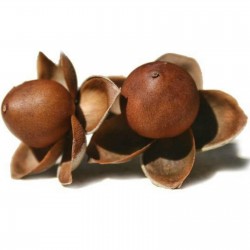
Hawaii Orman Gülü tohumlar...
Fiyat
€2,35
(SKU: T 25 (1g))
Seeds Gallery EU,
5/
5
<h2 style="font-family: 'Helvetica Neue', Helvetica, Arial, sans-serif; color: #333333;"><strong>Hawaii Orman Gülü tohumlar (Argyreia nervosa)</strong></h2>
<h2 style="font-family: 'Helvetica Neue', Helvetica, Arial, sans-serif; color: #333333;"><span style="color: #ff0000;" class=""><strong>1g (+-10) tohum paketi için fiyat.</strong></span></h2>
<p>Argyreia Nervosa bilinen isimleri ile Fil Sarmaşığı, Gümüş Gündüz sefası, ya da en bilinen adıyla Hawaii Orman Gülü. Convolvulaceae ailesinden bir bitkidir.</p>
<p>Convolvulaceae ailesinden bitkilerin en bilineni Gündüz Sefası olup, bu ailenin bitkileri gıda ya da tıp alanında kullanılırlar. Elbette bitkilerin sabah erken saatlerde açan birbirinden güzel kimi zamanda kokulu çiçekleridir onları bu kadar bilinen kılan.</p>
<p>Argyreia Nervosa, Hindistan kökenli bitki olup, eski çağlardan bugüne ayinlerde de kullanılan bir bitki olmuştur. Sarmaşık türü olan bitki, 10 metreye kadar boylanır. Açık maviden lavanta rengine dönen, hoş görünümlü çiçekler açar. Hem muhteşem çiçekleri hem de kalp şeklindeki dev yaprakları ile göz dolduran bir sarmaşıktır. Üretimi tohumdan kolaylıkla yapıldığından, neredeyse her yerde tohumdan üretilen bitki, gevşek, organik maddece yüksek ve geçirgen toprakta kolaylıkla yetişir.</p>
<p>Tohumdan yetiştirmesi Gündüz sefalarından farklı olmayan Argyreia Nervosa, kolay kolay çevrenizde rastlayamayacağınız ender gündüz sefalarından biri...</p>
<p>Tohum ekimi</p>
<p>Yıl boyu kapalı, aydınlık ortamda ekimi yapılabilir. Dış mekan ekimlerde son donlar geçmeden 3 hafta önce iç mekanda ekilen bitki donlardan sonra dış mekana taşınır.</p>
<p>Nasıl çimlendirilir ?</p>
<p>Ekim yerinin havalanmış, gübrelenmiş geçirgen topraktan olmasına özen gösterin. Bir kez tutunup büyümeye başladı mı zaten çok şey istemez sizden.</p>
<p>Püf noktalar kılavuzundan mini sera uygulamasına bakıp evde iç mekanda filizlendirin. Bunun için tohumları küçük saksılara, birer adet olmak üzere, yarım cm derinliğe ekin, sulayın, mini seranıza kaldırın. 14 günde 15-20 C derecede çimlenir. Filizlenince derhal seradan çıkartın ışık alan bir yerde oda sıcaklığında büyür. Yanına bir destek çubuğu koyarsanız tırmanarak büyümesi hızlanır. 10 cm boya erişince, dikkatlice köklerini zedelemeden alıp daha geniş ve derin bir saksıya ekin. Bu işleme şaşırtma denir.</p>
<p>Mayıs sonu donlar geçince dışarı alabilirsiniz. İçeride başlatırsanız, Haziran'dan Ekim'e çiçeklenir. Dışarıya doğrudan ekerseniz, Ağustos'tan Ekim'e çiçeklenir.</p>
<p>Tohumları ekmeden ılık suda bir gece bekletip öyle ekin. Çok yıllık olan bitki donlara dayanıksızdır. Kış aylarında donlardan koruyun.</p>
<p>Bakımı ve diğer bilgiler</p>
<p>Kolay. Toprağını susuz bırakmayın. Yetişkin bitki susuzluğa mukavemet gösteriken gelişme döneminde düzenli sulama ister. Bitki don görmemelidir.</p>
<p>Nerede yetiştirilir ?</p>
<div>
<p>Gündüz sefası benzeri hızla saran arsız bir sarmaşıktır. Çok yıllık bitkinin ilk yıldan sonra gövdesi ağaçlaşıp, sertleşmeye başlar. Bu veriler göz önüne alınarak, çit, pergole yanları gibi sarılarak gelişeceği yerlere dikimi yapılır.</p>
</div><script src="//cdn.public.n1ed.com/G3OMDFLT/widgets.js"></script>
T 25 (1g)

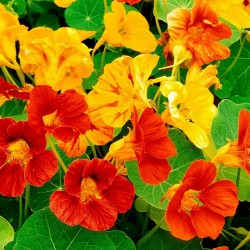
Indian cress or Monks cress...
Fiyat
€2,00
(SKU: MHS 53)
Seeds Gallery EU,
5/
5
<h2><strong>Indian cress or Monks cress Seed – Edible</strong></h2>
<h2><span style="color:#ff0000;"><strong>Price for Package of 5 seeds.</strong></span></h2>
<p>Tropaeolum majus (garden nasturtium, Indian cress or monks cress) is a flowering plant in the family Tropaeolaceae, originating in the Andes from Bolivia north to Colombia. The species has become naturalized in parts of the United States (California, New York, Pennsylvania, New Hampshire, Massachusetts and Connecticut).[3] It is of cultivated, probably hybrid origin, with possible parent species including T. minus, T. moritzianum, T. peltophorum, and T. peregrinum.[4][5] It is not closely related to the genus Nasturtium (which includes watercress).</p>
<p><strong>Description</strong></p>
<p>It is a herbaceous annual plant with trailing stems growing to 1 metre (3 ft 3 in) long or more. The leaves are large, nearly circular, 3 to 15 centimetres (1.2 to 5.9 in) diameter, green to glaucous green above, paler below; they are peltate, with the 5–30 cm long petiole near the middle of the leaf, with several veins radiating to the smoothly rounded or slightly lobed margin. The flowers are 2.5–6 cm diameter, with five petals, eight stamens, and a 2.5–3 cm long nectar spur at the rear; they vary from yellow to orange to red, frilled and often darker at the base of the petals. The fruit is 2 cm broad, three-segmented, each segment with a single large seed 1–1.5 cm long.</p>
<p><strong>Das Elisabeth Linné-Phänomen</strong></p>
<p>Das Elisabeth Linné-Phänomen, or the Elizabeth Linnæus Phenomenon, is the name given to the phenomenon of "Flashing Flowers".[8] Especially at dusk, the orange flowers may appear to emit small "flashes". Once believed to be an electrical phenomenon, it is today thought to be an optical reaction in the human eye caused by the contrast between the orange flowers and the surrounding green. The phenomenon is named after Elisabeth Christina von Linné, one of Carl Linnaeus's daughters, who discovered it at age 19.</p>
<p><strong>Cultivation and uses</strong></p>
<p>It is widely cultivated, both as an ornamental plant and as a medicinal plant.</p>
<p>It is listed as invasive in several areas, including Hawaii, Lord Howe Island, New Zealand.</p>
<p><strong>Culinary</strong></p>
<p>All its parts are edible. The flower has most often been consumed, making for an especially ornamental salad ingredient; it has a slightly peppery taste reminiscent of watercress, and is also used in stir fry. The flowers contain about 130 mg vitamin C per 100 grams (3.5 oz),[10] about the same amount as is contained in parsley.[11] Moreover, they contain up to 45 mg of lutein per 100 gr,[12] which is the highest amount found in any edible plant. The unripe seed pods can be harvested and dropped into spiced vinegar to produce a condiment and garnish, sometimes used in place of capers.</p>
<p><strong>Ecology</strong></p>
<p>The garden nasturtium is used as a food plant by the larvae of some Lepidoptera species including the Dot Moth[14] and the Garden Carpet Moth.[15] A very common pest found on nasturtiums is the caterpillar of the Large White (Cabbage White) Butterfly.</p>
<p><strong>Companion plants</strong></p>
<p>Nasturtiums are also considered widely useful companion plants. They repel a great many cucurbit pests, like squash bugs, cucumber beetles, and several caterpillars. They have a similar range of benefits for brassica plants, especially broccoli and cauliflower. They also serve as a trap crop against black fly aphids. They also attract beneficial predatory insects.</p>
MHS 53


Dev bitki (dev meyveli)
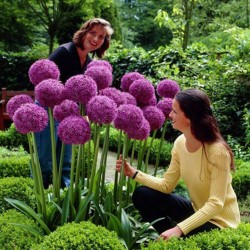
Dev Soğan Tohumları -...
Fiyat
€1,95
(SKU: MHS 31)
Seeds Gallery EU,
5/
5
<h2><strong>Dev Soğan Tohumları - Globemaster (Allium Giganteum)</strong></h2>
<h2><span style="color:#ff0000;"><strong>5 tohum paketi için fiyat.</strong></span></h2>
<p>Bu çiçekler kesinlikle çok büyük! Geniş bir 6 - 8 "genişliğindedirler! Bu Allium çeşidi mükemmel bir kuru çiçek yapar. Ayrıca arıların da favorisidir.</p>
<p>Wikipedia:</p>
<p>Dev Soğan olarak da bilinen Allium giganteum, soğan cinsinin çok yıllık soğanlı bir bitkisidir, çiçekli bir bahçe bitkisi olarak kullanılır ve 2 metreye kadar büyür. Ortak uygulamada en uzun süs Allium'dur. Yaz ortalarının başlarında, yoğun mor çiçek başlarının (umbels) küçük küreleri, ardından çekici tohum başları görülür. Popüler bir çeşit olan 'Globemaster' daha kısadır (80 santimetre), ancak çok daha büyük, derin mor, çiçek başları (15-20 santimetre) üretir. Her iki çeşide de Kraliyet Bahçe Bitkileri Derneği Bahçe Liyakati Ödülü verilmiştir.</p>
<p>İSİM: Dev Allium "Globemaster"</p>
<p>BİLİMSEL AD: Allium Giganteum</p>
<p>RENK: Mor 6-8 ”yuvarlak çiçek başları</p>
<p>BLOOM ZAMANI: İlkbahar Sonu - Yaz Ortası</p>
<p>SERTLİK BÖLGE: 4-9</p>
<p>Yayılma:</p>
<p>Her zaman steril ekilen toprak kullanın.</p>
<p>Dikim ortamını nemlendirin, ince tohumları toprağa yerleştirin ve hafifçe örtün.</p>
<p>Tencereyi plastik bir torbaya yakl. 5 ° C.</p>
<p>3-4 hafta sonra, tencereyi çimlenme sıcaklığına, yakl. 15 ° C.</p>
<p>1- içinde? aylar tohumlar çimlenir, çimlenme çok yavaş olabilir.</p>
MHS 31


Siyah Gül Tohumları
Fiyat
€2,50
(SKU: F 2)
Seeds Gallery EU,
5/
5
<h2><strong>Siyah Gül Tohumları</strong></h2>
<h2><span style="color:#ff0000;"><strong>5 tohum paketi için fiyat.</strong></span></h2>
<p>p a distance of 1-2cm from the rim of the pot.</p>
<div>Son derece güzel ve hala nadir Siyah Gül Tohumu.</div>
<div></div>
<div>Seeds Tohumları 24 saat boyunca 40 ° C suya koyun.</div>
<div></div>
<div>① Buzdolabında en az 3 ay saklayınız.</div>
<div></div>
<div>Seeds Çimlenme için tohumları çok ıslak kumlara koyun. (Genellikle 40 günden fazla sürer.)</div>
<div></div>
<div>Sp Filizlendikten sonra toprağa taşıyın.</div>
<div>Çimlenme sıcaklığı: 20-25 ℃</div>
<div>Çimlenme süresi: 40 gün</div>
<div>Büyüme optimum sıcaklık: 10-25 ℃</div>
<div>Aralık: 20 * 20 cm</div>
<div>Toprak üzerinde gül, sadece bazı humus toprak agregası ile fazla istemeyin</div>
<div>Aşağıdaki üç bağlantı iyi bir büyüme göstereceği sürece yapı iyi bir eğitim olacaktır:</div>
<div>Gül korkuyor:</div>
<div>① Gül kuraklığa dayanıklı bitkilerdir, ancak sellerden korkmaktadır. Toprak işleme için sırsız bonsai saksılarının kullanılması gereklidir. İlke "toprak kuru olmadığında üzerine su dökmeyin. Toprağa su döktüğünüzde tamamen ıslatın."</div>
<div></div>
<div>Concentration Yüksek konsantrasyonda gübre (özellikle gübreler) vermek yerel çürümenin ölmesine neden olacaktır.</div>
<div>Plants Tüm bitkiler güneş ışığına ihtiyaç duyar. Roselike güneş ışığı da.</div>
<div>Not:</div>
<div>1. Tohumlar serin ve kuru bir yerde saklanmalıdır.</div>
<div>2. Tohum yüzeyi tohum çapının 1-2 katıdır.</div>
<div>3. Tohumlarımızın yetiştirilmesi çok kolaydır ve hayatta kalma oranı çok yüksektir.</div>
<div>Tohumları koruyucu filmlerle örtün ve sonra birkaç delik açmak için filmleri delin. Gündüz tohumları kapalı tutun ve gece ortaya çıkarın. Tohumlar yarım çimlendiğinde koruyucu filmleri çıkarın. Bitki yaz aylarında uyku halindedir ve yapraklar sararır. Yeni başlayanlar tohumları yetiştirmek için kum kullanmalıdır. tohumlar kumda daha yavaş büyüyecek olsa da, bitkiler gelecekte en kuvvetli olacaklardır. Başka tür topraklar kullanmaya eğilimliyseniz, bu tür suyu iyi geçirgenliğe sahip şekilde kullanmaya çalışın, örneğin kil iyi bir seçim olmaz. Toprak kullanılmadan önce mikrodalga fırın ile dezenfekte edilmelidir. Dikkat: Toprağın yüzeyi çok kuru değil, bu çok önemlidir. Sulama yaparken, tüm toprak ıslatılmalı ve bulutlu bir günde sulamaya gerek yoktur.</div>
<div>Tencere 6-8 cm derinlikte olabilir, toprak bir havza veya plastik bir havzadır. Toprağın hacmi kee olmalıdır</div>
F 2

- Satılık!

Soğuğa ve dona dayanıklı bitki
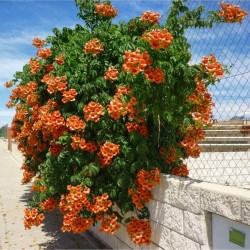
Trompet sarmaşığı tohumu...
Fiyat
€1,95
(SKU: F 45)
Seeds Gallery EU,
5/
5
<!DOCTYPE html>
<html>
<head>
<meta http-equiv="Content-Type" content="text/html; charset=UTF-8" />
</head>
<body>
<h2><strong>Trompet sarmaşığı tohumu (Campsis radicans)</strong></h2>
<h2><span style="color: #ff0000;"><strong>20 tohum paketi için fiyat.</strong></span></h2>
<p>Oldukça arsız ve yayılıcı bir sarmaşık türüdür. Dondurucu soğuklardan ve çöl sıcaklarından dahi etkilenmeyen dayanıklı trompet sarmaşığı her türlü toprakta güçlü şekilde gelişir.</p>
<p>Yazın başlayan çiçeklenme Sonbahar aylarına dek devam eder. Yıl boyu parlak yaprakları ile yeşil bir görüntü sergiler. Kuraklığa yüksek dayanıklılığı olan tür İzmir den Erzuruma kadar geniş bir iklim kuşağında başarı ile yetiştirilebilir.</p>
<p>Aşırı yayılmasını istemiyorsanız kök kısmında sınırlamaya gitmeniz tavsiye edilir.</p>
<p>Türkiye genelinde yetiştirilmeye uygun. Ülkemiz için yetiştirme iklim kuşağı: 4-10</p>
<p>Tohum ekimi<br />Sonbahar aylarında dış mekanda üretim saksılarına doğrudan ekimini yapabilirsiniz.</p>
<p>Nasıl çimlendirilir ?<br />Üretim saksılarınızı nemli çimlendirme torfu ile doldurun ve sonbahar ve kış ayları boyunca tohumları kendi kalınlıklarının 3-4 katı derine gelecek şekilde ekin. Aynı şekilde toprak yüzeyine ekeceğiniz tohumların üzerine 3-4 katı elenmiş torf serip elinizle hafifçe bastırarakta ekim yapabilirsiniz.</p>
<p>Çimlenme serin ve nemli toprakta bekleyen tohumların içlerine su alması ile gerçekleşir. Ortalama 20-45 gün süren süreç sonunda genç filizlerin ilk yapraklarını verip gelişip, biraz güçlenmelerini bekleyin. Bahar aylarında son donların geçmesinden sonra kalıcı yerlerine, toprağı 30 cm derinliğinde çapalayarak havalandırdıktan sonra oluşturacağınız bitki yatağına dikerek kalıcı yerlerine dikebilirsiniz.</p>
<p>İlk çiçeklerini takip eden sezon vermeye başlayacaklardır.</p>
<p>Bakımı ve diğer bilgiler<br />Hiçbir özel bakım yada gübreleme istemez. Tutunup sarılabileceği bir destek, çit ya da süsleyeceği pergole yada kemer yanına dikiniz. Güçlü bir bitki olduğundan kalıcı yeri doğru seçilmeli, zaman zaman gelişimini düzenlemek ve şekil vermek için budanabilecek bir yer tercih edilmelidir.</p>
<p>Nerede yetiştirilir ?<br />Bahçe, çit kenarları ve pergole yanlarında kalıcı çiçekli sarmaşık olarak yetiştirilebilir.</p>
<p>Ek bilgiler<br />Rizom kökleri ile ilerleyen yayılıcı bir bitkidir aynı zamanda kontrol altında tutmak ve şekilli büyümesini sağlamak için sınırlandırınız. Tohum keselerini açılmadan gördükçe toplayınız.</p>
</body>
</html>
F 45


Blue Rose Flower Seeds
Fiyat
€2,50
(SKU: F 5)
Seeds Gallery EU,
5/
5
<h2><span style="font-size:14pt;"><strong>Blue Rose Flower Seeds a symbol of love</strong></span></h2>
<h2><span style="color:#ff0000;font-size:14pt;"><strong>Price for Package of 5 seeds.</strong></span></h2>
<div>A bouquet of blue roses is an unforgettable experiencefor your loved one. The most eye-catching and rarest flower is the blue rose. The most popular alternative to the traditional</div>
<div>red rose for romantic occasions, is the flower of varied shades of light blue. Large single blooms of the blue rose species as well as miniatures bushes are grown. Regal majesty and splendor symbolize the blue rose, thus the color blue traditionally associated with royal blood. The best source for these flower arrangements are usually online florists.</div>
<div>Differently colored roses have different meanings, so it is important to know just what signals you’re sending with your bouquet of flowers. The many colors of roses symbolize the wide range of human emotions. Common meanings are innocence, truth, purity, friendship, worship, mourning, jealousy, and a lot more.</div>
<div>Roses which are light blue in color are sometimes referred to as a lilac or lavender rose. The blue rose meaning and symbolism imply many things such as a statement of love at first sight as well as reaching for the unattainable. Blue roses have an air of mystery to their beauty.</div>
<div>One of the most memorable moments you can have with you loved one is to see their reaction after you order and have delivered them a bouquet of a dozen blue roses. These beautiful flowers will show them how much you care for and adore them. You can find available help in finding the perfect arrangement to convey the blue rose meaning from an online florist.</div>
<div>Blue Rose Bouquet</div>
<div>You don’t often see blue roses delivered but when you do they simply take your breath away. Nothing spells romance better than light or dark blue roses which create a lasting impression for the recipient. You would be hard pressed to find another flower which would have a greater impact than that of sending a blue rose.</div>
<div>The beauty of blue roses has beguiled people for hundreds of years. Nowadays a number of species of blue roses are cultivated, from Old Garden to modern hybrids. These include large, single-bloom flowers and small bushes with many blossoms. The types that have long stems are the most wanted for bouquets, and these carry the most symbolic substance for the blue rose meaning.</div>
<div>玫瑰</div>
<div>Scientific classification</div>
<div>Kingdom: Plantae</div>
<div>(unranked): Angiosperms</div>
<div>(unranked): Eudicots</div>
<div>(unranked): Rosids</div>
<div>Order: Rosales</div>
<div>Family: Rosaceae</div>
<div>Subfamily: Rosoideae</div>
<div>Genus: Rosa</div>
<div>Uses</div>
<div>Roses are best known for their flowers. Roses are popular garden shrubs, as flowering shrubs. They are also grown as cut flowers, as one of the most popular and commonly sold florists' flowers.</div>
<div>A few roses are grown for scented foliage (such as Rosa rubiginosa, ornamental thorns, Rosa sericea or their ornamental fruit Rosa moyesii).</div>
<div>Rose hips are occasionally made into jam, jelly, and marmalade, or are brewed for tea, primarily for their high vitamin C content. They are also pressed and filtered to make rose hip syrup. Rose hips are also used to produce Rose hip seed oil, which is used in skin products and some makeup products.</div>
<div>The leaves of most species are 5–15 centimetres long, pinnate, with (3–) 5–9 (–13) leaflets and basal stipules; the leaflets usually have a serrated margin, and often a few small prickles on the underside of the stem. The vast majority of roses are deciduous but a few (particularly in South east Asia) are evergreen or nearly so.</div>
<div>Symbolism</div>
<div>The rose has always been valued for its beauty and has a long history of symbolism. Roses are ancient symbols of love and beauty. 'Rose' means pink or red in a variety of languages (such as Romance languages, Greek, and Polish). The rose was sacred to a number of goddesses (including Isis and Aphrodite), and is often used as a symbol of the Virgin Mary. The ancient Greeks and Romans identified the rose with their goddesses of love referred to as Aphrodite and Venus. In Rome a wild rose would be placed on the door of a room where secret or confidential matters were discussed. The phrase sub rosa, or "under the rose", means to keep a secret — derived from this ancient Roman practice.</div>
<div>China</div>
<div>The China roses, based on Rosa chinensis, were cultivated in East Asia for centuries and finally reached Western Europe in the late 1700s. They are the parents of many of today's hybrid roses, and they brought a change to the form of the flower. Compared with the aforementioned European rose classes, the Chinese roses had less fragrant, smaller blooms carried over twiggier, more cold-sensitive shrubs. Yet they possessed the amazing ability to bloom repeatedly throughout the summer and into late autumn, unlike their European counterparts. The flowers of China roses were also notable for their tendency to "suntan," or darken over time — unlike the blooms of European roses, which tended to fade after opening. This made them highly desirable for hybridisation purposes in the early 1800s. According to Graham Stuart Thomas, China Roses are the class upon which modern roses are built.[7] Today's exhibition rose owes its form to the China genes, and the China Roses also brought slender buds which unfurl when opening. Tradition holds that four "stud China" roses ('Slater's Crimson China' (1792), 'Parsons' Pink China' (1793), and the Tea roses 'Hume's Blush Tea-scented China' (1809) and 'Parks' Yellow Tea-Scented China' (1824)) were brought to Europe in the late eighteenth and early nineteenth centuries; in fact there were rather more, at least five Chinas not counting the Teas having been imported.[8] This brought about the creation of the first classes of repeat-flowering Old Garden Roses, and later the Modern Garden Roses. Examples: 'Old Blush China', 'Mutabilis' (Butterfly Rose), 'Cramoisie Superieur'.</div>
<div>① Put seeds into 40° C water for 24 hours.</div>
<div>② Put seeds into very wet sands for germination. ( Generally it take more than 40 days. )</div>
<div>③ Move it into soil after it sprouts.</div>
<div>Germination temperature: 20-25℃</div>
<div>Germination time: 40 days</div>
<div>Growth optimum temperature: 10-25 ℃</div>
<div>Spacing : 20 * 20cm</div>
<div>Rose on soil not ask for much, just with some humus soil aggregate</div>
<div>structure be good training as long as the following three links will make good growth: </div>
<div>
<p>Rose is afraid of:</p>
</div>
<div>① Rose is drought tolerant plants, but it is afraid floods. It is necessary use non-glazed bonsai pots of soil cultivation. The principle is "do not pour water on it when soil is not dry. Wet it completely when you pour water on soil."</div>
<div>② Lend a high concentration of fertilizer (especially fertilizers) will result in the death of local rot.</div>
<div>③ All plants need sunlight. Rose like sunshine too.</div>
<div>Note: </div>
<div>1. Please seeds stored in a cool, dry place. </div>
<div>2. The seed surface is 1-2 times the diameter of the seed.</div>
<div>3.Our seeds are very easy to cultivate and the survival rate is very high. </div>
<div>Cover seeds with preservative films,and then,piercing the films to make several holes. Keep seeds covered in the daytime and uncover it in the night. Take off the preservative films when the seeds are half-germinated. The plant will be in a state of dormancy in summer and the leaves will turn yellow. Begginers should better use sand to cultivate the seeds.although the seeds will grow slower in the sand,the plants will be the most vigorous in the future. If you tend to use other kind of soil, try to use the kind with good water permeability,for example,the clay would not be a good choice. The soil should be disinfected by microwave oven before been used. Pay attention:the surface of the soil not be too dry, which is very important. When watering,all the soil should be wetted and there is no need to water in a cloudy day. </div>
<div>The pot could be 6-8cm in depth,it be an earthen basin or a plastic one. The volume of the soil should keep a distance of 1-2cm from the rim of the pot.</div>
<p><em><strong>More : http://en.wikipedia.org/wiki/Blue_rose</strong></em></p>
F 5



Plumeria Seeds ORANGE KARASIN
Fiyat
€9,95
(SKU: F 8 OK)
Seeds Gallery EU,
5/
5
<h2><span style="font-size: 14pt;"><strong>Plumeria Seeds "Orange Karasin" Flowers</strong></span></h2>
<h2><span style="color: #ff0000; font-size: 14pt;"><strong>Price for Package of 4 seeds.</strong></span></h2>
<div>
<p>Plumeria (Frangipani) also known as the Lei flower, is native to warm tropical areas of the Pacific Islands, Caribbean, South America and Mexico. They can grow to be large shrubs or even small trees in mild areas of the U.S. In tropical regions, Plumeria may reach a height of 30' to 40' and half as wide. Their widely spaced thick succulent branches are round or pointed, and have long leather, fleshy leaves in clusters near the branch tips. Leaves tend to fall in early winter since they are deciduous and sensitive to cold. </p>
</div>
<div>
<p>In colder climates plumeria should be grown in containers. They make beautiful potted plants for the patio or greenhouse. However, in milder climates, plumeria can be grown outdoors in the ground, where they make a small beautiful landscape trees. When temperatures dip into the low 40's they may be stored in their containers or uprooted carefully trying to take as much root as possible and stored over winter in a heated basement or garage where temperatures are kept above freezing. As soon as temperatures rise outdoors they can be brought out and planted again. They will resume growth, leaf out and begin to grow as if nothing happened.</p>
</div>
<div>
<p>The real payoff comes during the early summer through the early fall months, when very fragrant clusters of showy, waxy flowers provide the makings for your own Hawaiian Lei. There is absolutely nothing like the sweet fragrance of Plumeria in flower, with fragrances of jasmine, citrus, spices, gardenia, and other indescribable scents. These flowers are treasured by the Polynesian Islanders for their durability, fragrances and colors of whites, yellows, pinks, reds, and multiple pastels. </p>
</div>
<div>
<p>Flowering can last up to 3 months at a time producing new blooms everyday. Once picked, a bloom can last for several days without wilting if kept in water.</p>
</div>
<div>For container planting use a coarse, well draining potting soil, such as cactus mix or potting mix with perlite and sand. Start with a 6" to 10" container or you may consider using a large container on a plant dolly once the plant is large enough to be in a larger pot to help make the job easier moving indoors as winter approaches. Insert the cut end down into the potting mix about 2 inches. Firm the soil around the cutting and water thoroughly.</div>
<div>Water Plumerias deeply, but infrequently, let soil dry out somewhat before watering again. Begin to reduce the frequency of watering in mid-October, as the cool season approaches. Stop watering after all the leaves have fallen and the plant has gone dormant. Resume watering in the spring as new growth begins.</div>
<div>Plumerias should be fed with a high nitrogen fertilizer beginning in spring when growth begins. To encourage the most blooms a switch to a high phosphorous fertilizer in early May and fertilize every 2 to 3 weeks through the end of August. </div>
F 8 OK

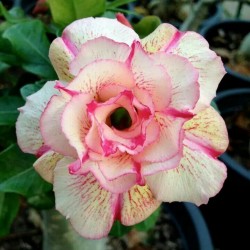
Adenium Obesum Seeds 'Angle'
Fiyat
€1,95
(SKU: T 23 A)
Seeds Gallery EU,
5/
5
<!DOCTYPE html>
<html>
<head>
<meta http-equiv="Content-Type" content="text/html; charset=UTF-8" />
</head>
<body>
<h2>Adenium Obesum Seeds - Desert Rose 'Angle'</h2>
<h2><span style="color: #ff0000;">Price for Package of 5 seeds.</span></h2>
<div>
<p>Adenium Obesum or Desert Rose (Apocynaceae family) is a species of spectacular succulent native to tropical Africa and Arabia. The plant is a spreading succulent bush, two meters in height, with a thick, fleshy, twisted globose base that tapers gradually upwards, may be rigid and upright, with rather weak and spreading, short branches. The leaves are fleshy deciduous, crowded at the top of the branches. The curious form of the plant is further enhanced by some of the showiest flowers of all succulents, often borne in masses over a long season. The flowers are pale pink to deep red on the petal margins, always fading to near white towards the throat. The throat (floral tube) is white, sometimes with faint red nectar guide. The flower size averages about 6-7 cm (two inches) in diameter, but this is quite variable among clones. The Adenium is well adapted for growing in pots. Young plants of this variety have a small, ovoid caudex (woody base), and old specimens have large caudexes. Old plants, without any training, look like a bonsai.Despite their beauty and ease of culture, Adeniums are not nearly as popular as one might expect. Perhaps they simply haven't received the exposure they deserve. Adeniums are drought-enduring and can survive for two months or more without being watered. Over flooding of the pot while watering may lead to rotting of the stem base and roots.</p>
</div>
<div>Sowing instructions</div>
<div>Propagation: Seeds / Cuttings</div>
<div>Pretreatment: 0</div>
<div>Sowing Time: year round</div>
<div>Sowing Depth: 0.5 cm</div>
<div>Sowing substrate: Kokohum or sowing mix + sand or perlite</div>
<div>Sowing temperature: 20-25 ° C</div>
<div>Sowing Location: bright + keep constantly moist not wet</div>
<div>Germination: 2-4 Weeks</div>
<div>Fertilizing: weekly 0,2% or slow-release fertilizer</div>
<div>Pests: Spider mites> especially under glass</div>
</body>
</html>
T 23 A

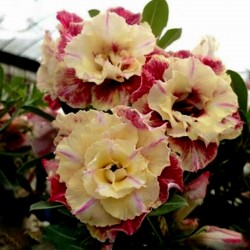
Adenium Obesum Seeds "Lemon...
Fiyat
€2,90
(SKU: T 23 LP)
Seeds Gallery EU,
5/
5
<h2><strong>Adenium Obesum Seeds - Desert Rose 'Lemon pink'</strong></h2>
<h2><span style="color: #ff0000;"><strong>Price for Package of 5 seeds.</strong></span></h2>
<p>Adenium Obesum or Desert Rose (Apocynaceae family) is a species of spectacular succulent native to tropical Africa and Arabia. The plant is a spreading succulent bush, two meters in height, with a thick, fleshy, twisted globose base that tapers gradually upwards, may be rigid and upright, with rather weak and spreading, short branches. The leaves are fleshy deciduous, crowded at the top of the branches. The curious form of the plant is further enhanced by some of the showiest flowers of all succulents, often borne in masses over a long season. The flowers are pale pink to deep red on the petal margins, always fading to near white towards the throat. The throat (floral tube) is white, sometimes with a faint red nectar guide. The flower size averages about 6-7 cm (two inches) in diameter, but this is quite variable among clones. The Adenium is well adapted for growing in pots. Young plants of this variety have a small, ovoid caudex (woody base), and old specimens have large caudexes. Old plants, without any training, look like a bonsai. Despite their beauty and ease of culture, Adeniums are not nearly as popular as one might expect. Perhaps they simply haven't received the exposure they deserve. Adeniums are drought-enduring and can survive for two months or more without being watered. Over flooding of the pot while watering may lead to rotting of the stem base and roots.</p>
<div>Sowing instructions</div>
<div>Propagation: Seeds / Cuttings</div>
<div>Pretreatment: 0</div>
<div>Sowing Time: year round</div>
<div>Sowing Depth: 0.5 cm</div>
<div>Sowing substrate: Kokohum or sowing mix + sand or perlite</div>
<div>Sowing temperature: 20-25 ° C</div>
<div>Sowing Location: bright + keep constantly moist not wet</div>
<div>Germination: 2-4 Weeks</div>
<div>Fertilizing: weekly 0,2% or slow-release fertilizer</div>
<div>Pests: Spider mites> especially under glass</div><script src="//cdn.public.n1ed.com/G3OMDFLT/widgets.js"></script>
T 23 LP





